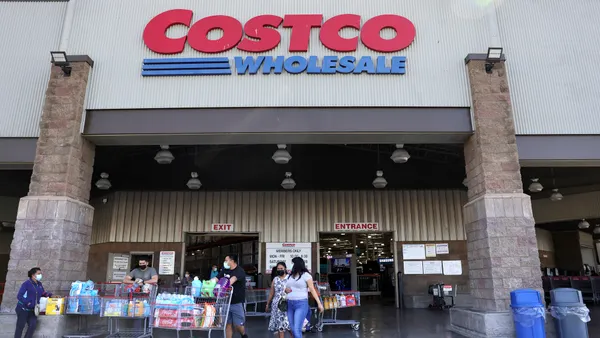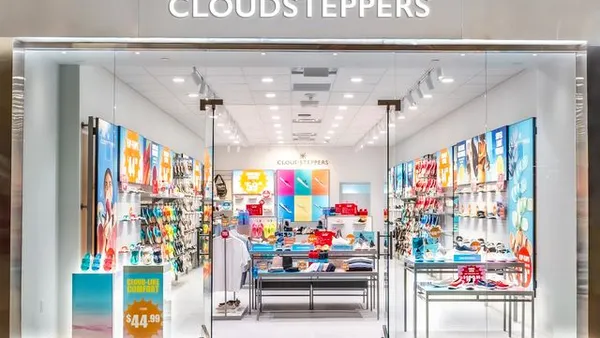Secondhand apparel sales — embraced by younger consumers, fueled by the pandemic and outpacing the wider market — is getting the attention of the retail industry.
The segment has become difficult for retailers to ignore. In five years, used apparel sales are projected to reach $77 billion, outpacing the wider market eleven-fold, according to the latest survey from used-clothing site ThredUp.
At the very least, 42% of retailers agree that used clothing will be "an important part of their business," the report found. A whopping 60% of retailers have already offered or are open to resale, (almost 24,000 would like to sell used clothing), and a third actually say it's become "table stakes," according to the report, released Wednesday. That could be because consumers are flocking to this option, as 62% of retail executives told ThredUp that their customers are already buying secondhand fashion.
For now, the logistics of apparel resale is leading most retailers (60%) to say that partnership with a used-clothing purveyor is their best way into this market, while 28% say they'd rather build from scratch and 8% would acquire a resale business, ThredUp found.
"Consumers are refreshing their closets and turning to resale as a way to sustainably discard garments and acquire new ones," said Neil Saunders, Managing Director at GlobalData, which conducted the research. "Retailers recognize this shift, which is why so many of them are now looking to get into resale. These trends will make resale the most dynamic and fast-paced part of the apparel market over the next decade."
Pandemic-fueled interest
During the pandemic, resale may not have enjoyed quite the sales lift found in active and outdoor clothing, but the market has emerged stronger than ever, Saunders also said in his statement.
Last year, secondhand sales grew "modestly," while apparel in general fell hard, according to ThredUp VP of Marketing Communications Karen Clark, who spearheaded the research.
"It was a pretty resilient category, and then it's expected to accelerate — re-accelerate essentially — out of the pandemic," Clark said in a video interview.
The pandemic may have permanently reshaped attitudes when it comes to buying and selling already worn clothes, ThredUp and GlobalData researchers say. Of the 33 million consumers who bought secondhand clothes for the first time last year, for example, 76% say they plan to spend more on such items in the next five years. In all last year, ThredUp found that 223 million consumers are now open to shopping secondhand.
A challenge to fast fashion, off-price
According to ThredUp's report, the "average thrifter" last year bought seven articles of used clothing that they would have otherwise bought new, extrapolating that the secondhand market displaced 542 million new garments last year.
If that holds, it could hurt fast fashion the most. That segment is already under pressure due to its association with unsustainable practices, as noted by UBS analysts and Moody's Investors Service this year.
Two out of five consumers who already shop secondhand say they're replacing fast-fashion items with used ones, ThredUp found, setting up the used apparel market to get twice as big as fast fashion within the decade.
That could be for environmental reasons, as ThredUp also found that 45% of millennial and Gen Z shoppers say they won't buy from unsustainable brands or retailers. A quarter also say they care less about fashion trends — perhaps fast fashion's biggest advantage outside of price — than they did pre-pandemic. While for some this stems from environmental concerns, buying into the idea that reusing clothes is more sustainable than buying new, it could also be that many have an eye on being able to resell their apparel.
Shopping secondhand means sorting through one-of-a-kind finds, and ThredUp found that half of these shoppers enjoy the treasure-hunt aspect — a rare opportunity to compete with off-price retail. As the market grows, the supply is growing with it, made easier by the proliferation of e-commerce sites like Poshmark, Mercari, eBay and ThredUp itself.
"As it becomes easier to sell clothing online, more and more consumers are selling their clothes, putting great product into the market and then driving these types of numbers," Clark said.















